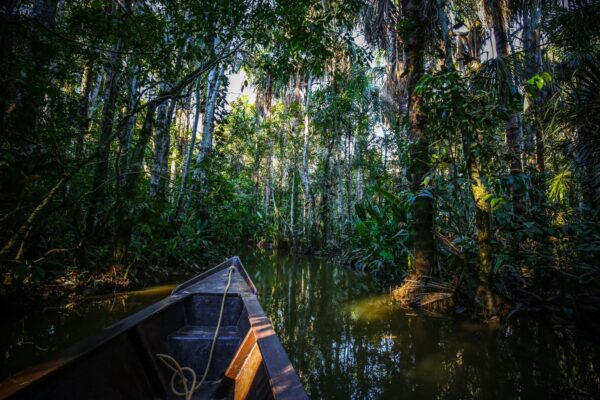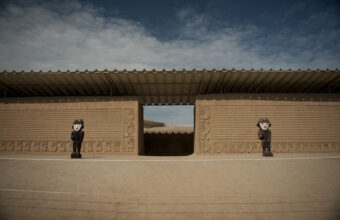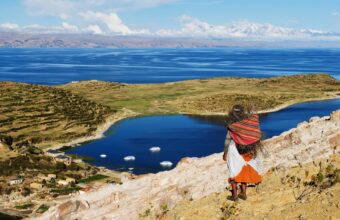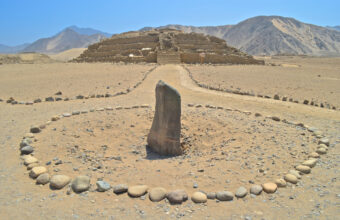Peru
Hidden treasures for those that look



Mention Peru to most and their first response will almost certainly be: Machu Picchu!
For better or worse the famed citadel has become virtually synonymous with its host nation. But despite Machu Picchu's unarguable majesty, there is so much more to the rest of the country than these attention-stealing ruins. Pre-Columbian cultures left their indelible mark the length and breadth of Peru while the Incas were still in metaphorically short pants.
Beyond archaeology there's world-beating cuisine and a buzzing arts scene in Lima, inconceivably vast Andean landscapes, oh and we haven't even mentioned the Amazon rainforest, which occupies a good two-thirds of the country's territory. Sure, come for the ruins. But leave plenty of time for the rest — you won't regret it.
The Peruvian Amazon
An essential travel guide to the Peruvian Amazon
The Andes mountain range runs north to south through Peru, a giant spine splitting the country into distinct geographic regions. To the west of the Andes lies the coastal strip, a rain shadow area of deserts and large coastal cities. Head east of the Andean highlands and you’ll drop down into the vast and sparsely populated Peruvian Amazon, first to the cloud forested foothills, known as the selva alta, or high jungle, before plunging down into the lowland jungles further east...read more
6 days
Classic Peru & Machu Picchu
The classic route to Peru's most popular highlights
9 days
Machu Picchu & Amazon lodge
See Peru from rainforest eco-lodge to mountain empires
8 days
Active Sacred Valley & Machu Picchu trek
Explore Peru's grand route of the Incas
18 days
Northern Peru beyond Machu Picchu
Amazon river cruises and archaeological wonders
-

Lima
Peru's unfairly overlooked capital
Many tourists arrive in Lima only to fly straight out to Cusco, Arequipa or other popular tourist destinations in Peru... -

Cusco
Capital of the Inca
Once the capital of the mighty Inca Empire, Cusco is today the beating heart of Peru's tourism industry... -

Sacred Valley
Peru's spiritual heartland
The Urubamba River descends from Cusco, eventually connecting with tributaries of the mighty Amazon... -
Lares Valley
... -
Salkantay
... -
Vilcabamba
... -
Ausangate
... -
Ancascocha
... -

Machu Picchu
Peru's archaeological rock star
Machu Picchu is the top attraction in Peru and, in 2007, was voted one of the New Seven Wonders of the World... -

Arequipa
Peru's elegant White City
Peru's second city is an elegant, refined counterweight to Lima's grey skies and frequently frenetic streets... -

Colca Canyon
Flight of the condor
Twice as deep as the Grand Canyon but a fraction of the width, Colca Canyon cuts a dramatic scar across Peru's southern Andes... -

Lake Titicaca
Shimmering heart of the Andean universe
A tranquil expanse of turquoise water seemingly at the roof of the world, Lake Titicaca was revered as the birthplace of Peru's original civilisations and the centre of the indigenous cosmos... -

Puerto Maldonado
Accessible Amazonian adventures
Puerto Maldonado, in Peru's southern Amazon, is the most accessible entrance to the jungle... -

Iquitos
The jungle city
Famous for being accessible only by air or boat, Iquitos lies in Peru's distant north-eastern Amazon with a distinct frontier vibe to match... -
Manú National Park
... -
Peruvian Amazon
... -

Chavín de Huántar
"Birthplace of South American culture”
If you have an interest in the formation of Andean civilisation, Chavín de Huántar is vastly more significant than the famed Machu Picchu, but with a fraction of the crowds... -

Choquequirao
Machu Picchu without the crowds (for now)
Machu Picchu 2... -
Trujillo
Northern historical heartlands
... -
Chiclayo
... -

Chachapoyas & Kuelap
The great cloud forest citadel
Constructed by the Chachapoyas people, a formidable and mysterious pre-Inca civilisation who referred to themselves as ‘Warriors of the Cloud’, Kuélap was probably first settled sometime in the fifth or sixth century AD and gradually built up over almost a millennium... -

Huaraz
Peru's mountain exploration base
Huaraz is Peru’s premier destination for trekking and mountain climbing in the Andes... -

Tarapoto
... -

Caral
In 1994, archaeologist Ruth Shady Solis stumbled on a strange mound in Peru’s grey lunar desert... -

Chan Chan
With its strange, honeycomb-like walls and labyrinth of wavelike parapets, this sprawling adobe capital looks at first to have been made by extraterrestrials... -
Sipan
... -
Tucume
... -
Luya Province
... -
Ollantaytambo
... -
Leymebamba
... -
Utcubamba Province
... -
Nazca
... -
Tambopata
... -
Piura
... -
Mancora
... -
Gocta Falls
... -
Cajamarca
... -
Tamshiyacu-Tahuayo Reserve
... -
Pacaya-Samiria National Reserve
... -
Tambopata National Reserve
... -
Inca Trail
... -
Waqrapukara
... -
Huanuco Pampa
... -
Qhapaq Ñan
... -
Cordillera Blanca
... -
Cordillera Huayhuash
... -
Paracas
... -
Vicos
...
Places to go in Peru
Peru Tours

Machu Picchu, Nazca Lines, and Lake Titicaca
In-depth discovery of Peru's culture and history
13 daysFrom $2,959Peru Travel Companies



 North America,
South America,
Antarctica
North America,
South America,
Antarctica
SA Expeditions
Tailor-made guided tours to North and South America



 South America,
Africa,
South Asia
South America,
Africa,
South Asia
The Adventure People
The Most Inspiring & Exciting Adventure Holidays On Earth.






































